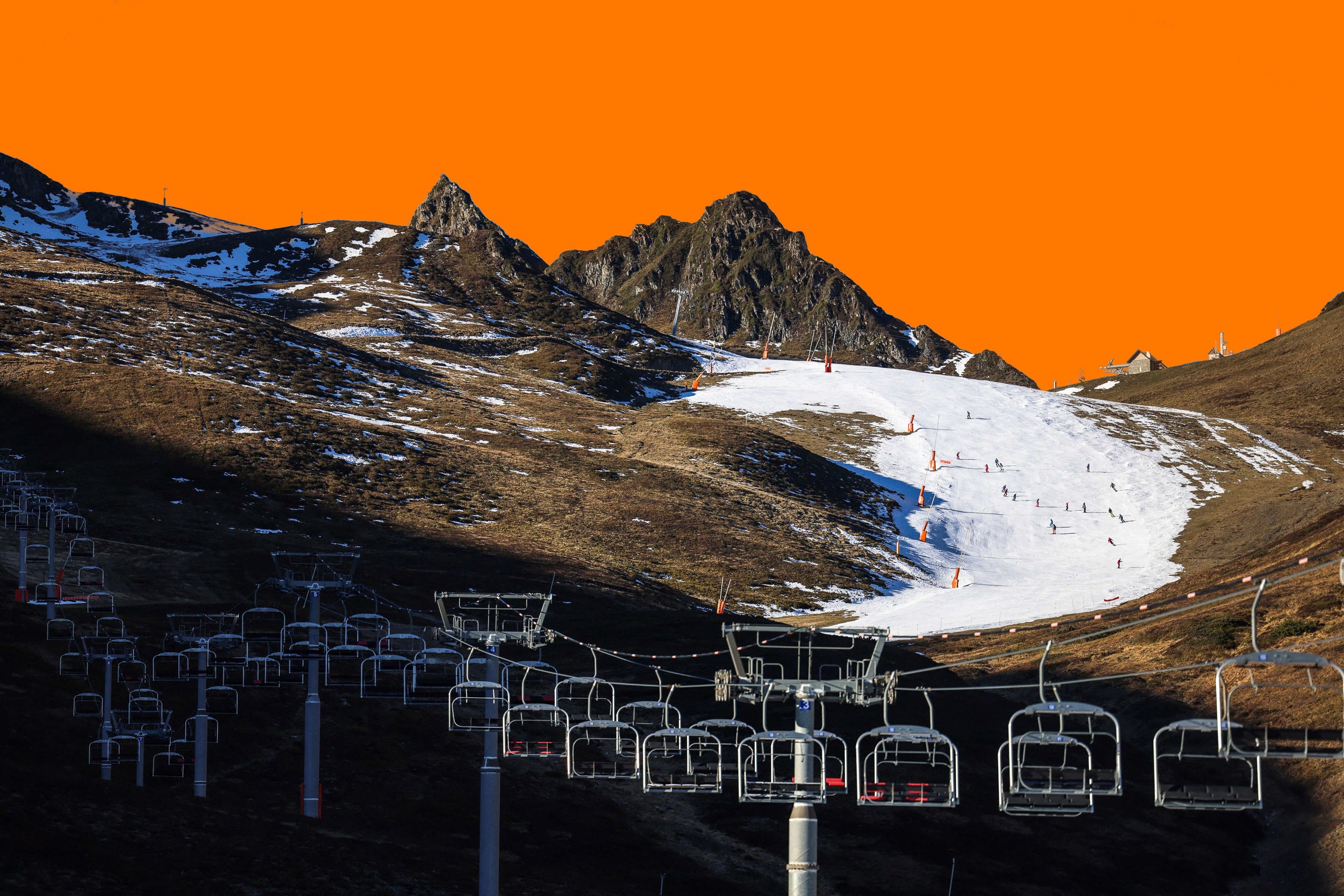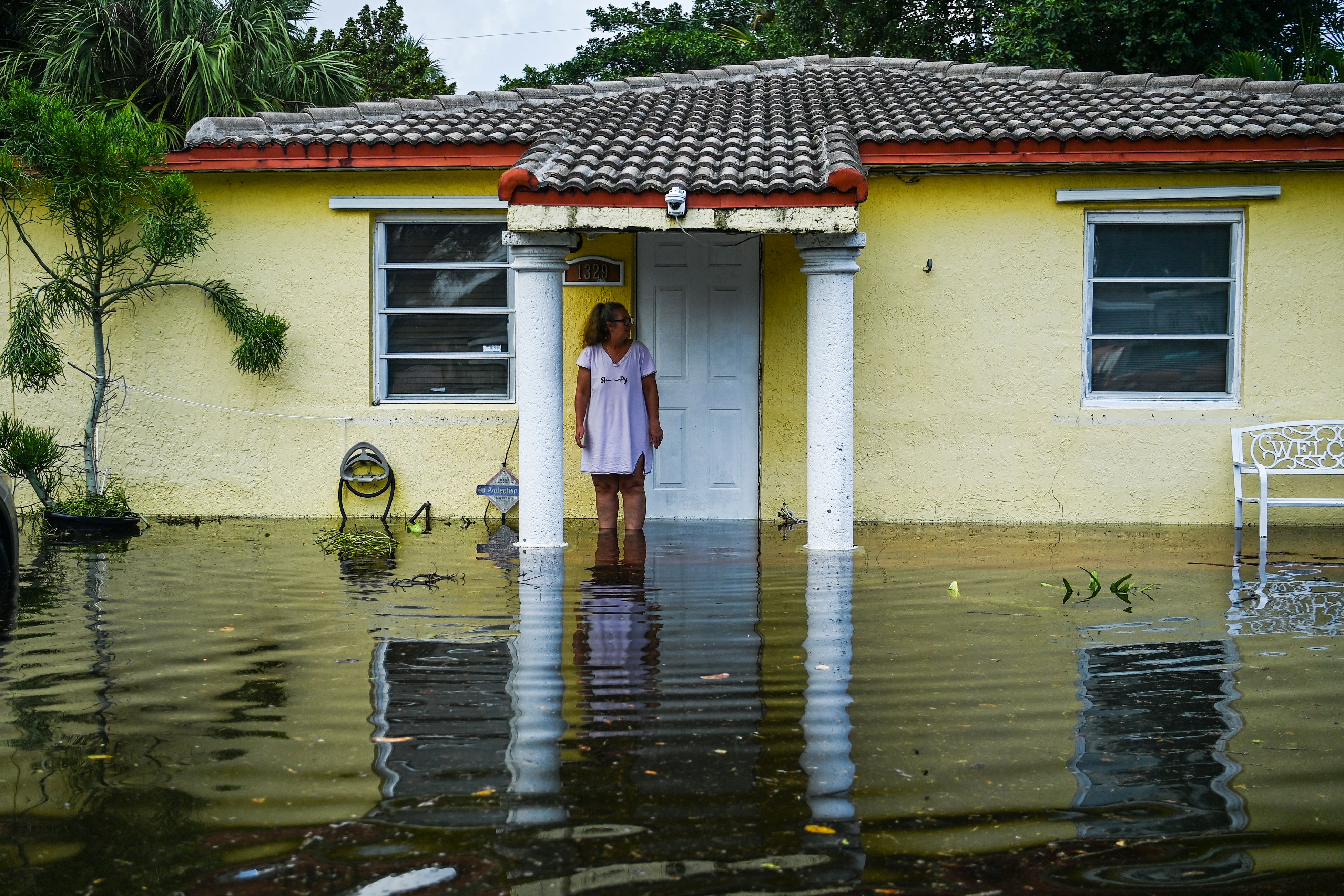Ski Resorts Are Stockpiling Snow to Get Through Warm Winters

It’s time to check on the snow pile. In mid-August, Marko Mustonen, commercial director of Levi ski resort in northern Finland, logs on to a live webcam view of an elongated heap of snow snaking down a hillside. He shares his screen with me on Zoom so that I too may observe the precious hoard. The snow is neatly covered by thick, white, insulating blankets—and surrounded by grassy green terrain.
“It’s looking very good,” Mustonen remarks. “This is the biggest amount of snow we have ever stored. I think we are reaching the optimum.”
Four separate stockpiles like this one at Levi amount to a total of 260,000 cubic meters of snow, enough to fill 100 Olympic swimming pools. It is one of the largest snow-storing operations in the world. With this hefty supply at hand, Levi can more or less guarantee opening some key ski routes in November without having to rely on natural snowfall.
As the climate warms, ski destinations in some parts of the world are facing a crisis: not enough snow. It is a problem that has shuttered some resorts for good. While Mustonen says the snowfall in this part of northern Finland has not changed dramatically, he notes that it could in the coming decades. For now, snow storage helps mitigate against natural variability here each winter.
One way to combat a lack of snow is to produce it artificially with huge machines—sometimes working around the clock, for days on end. But this is energy intensive and requires relatively low outdoor temperatures. Proponents of snow storage, meanwhile, argue that it allows resorts to make artificial snow cheaply, when conditions are most favorable, and then keep it until it is needed. Storing natural snow is also possible. Snow storage even has industrial applications. It can be used to supply cooling systems in large buildings during hot summers, for instance. Ultimately, snow storage lets you pretend that winter is here—whenever you want.
Once Levi’s mechanical herd of snow-grooming machines begin working the cached snow over slopes and cross-country courses in late autumn, the material will form a dense, icy base—skiable, but also the perfect substrate to keep fresh natural snow cold and in place, once it begins to fall.
“We are quite happy with the process and material,” says Mustonen. He adds that most of the stored snow, 60 to 70 percent, is artificially made while the rest is natural. Levi is celebrating its 60th anniversary of opening this year. Mustonen explains that, in the past, late snowfall occasionally hampered plans to open the resort in early winter.
The company behind the insulating blanket system used by Levi and dozens of other resorts in Europe to preserve their snow during summer is Snow Secure, based in Finland. The blankets are made from extruded polystyrene, or XPS (a type of plastic), supplied by Finnish insulation manufacturer Finnfoam. And they come in 4-meter sheets that are either 18 25 meters long. These are laid over snow mounds and the joins taped together to seal everything in.
“We provide 100 percent snow security,” says Antti Lauslahti, Snow Secure’s CEO, proudly. “Any ski resort can start the season at a specific date.”
He adds that the system has performed well even when summer heat waves push temperatures above 40 degrees Celsius (104 degrees Fahrenheit). Beneath the blankets, temperatures do not exceed roughly 1 or 2 degrees Celsius. Snow Secure, and its clients, can check that their icy stockpiles remain cool thanks to real-time temperature sensors.
Some snow does, inevitably, melt and trickle away during the summer months, but Lauslahti says his firm aims to ensure that losses do not exceed 30 percent of the original pile. Mustonen has observed this level of performance at Levi. For now, the approach appears resilient even in the face of increasingly hot European summers. “We haven’t yet seen the temperature where it would totally melt,” says Lauslahti.
It’s not just ski resorts that can make use of stored snow. One of Snow Secure’s clients is a timber-processing plant. Staff there keep large pieces of wood under a thick layer of snow topped with the blankets. It keeps the timber from drying out too much in the summer, ensuring that it stays fresh and easy to cut, says Lauslahti.
Elizabeth Burakowski at the University of New Hampshire says that, in general, snow storage is “a great strategy to address the uncertainty that we have when living in a climate that’s warming rapidly.” She adds that ski resorts should consider using electric-powered snow-grooming machines, to reduce emissions and reliance on fossil fuels.
Snow Secure is keen to promote its blanket system. But there is another way of covering up a big ol’ heap of snow and insulating it for months on end. And it has been used for centuries. You can just spread sawdust or wood chips over the snow instead.
“It’s an elegant technology,” says Kjell Skogsberg, who works in the renewable energy industry. “It’s really reliable and simple.”
Back in 2001, Skogsberg and a colleague published a paper about a snow-storage system they had designed for a hospital in Sundsvall, in eastern Sweden. “It’s like a pit with a slightly sloping bottom where you dump the snow,” he explains. The snow is topped with a 200-millimeter-thick covering of wood chips to prevent it from melting too quickly. Then, over the summer, meltwater gently flows to an outlet at the bottom corner of the pit, passing through filters that remove any grit or dirt, and finally the chilly water heads to a heat exchanger. This helps to lower the temperature of a separate flow of water that gets pumped through the hospital’s cooling system.
“That is used for air conditioning and also process cooling—for instance, X-ray machines,” says Skogsberg. The system is still in use today, he adds, and it can completely cover the energy demand for summer cooling at the hospital, which, at 1 gigawatt hour for the May–August period, is significant. Skogsberg is currently in discussions with an energy company that might build a version of the technology for a district cooling system. Airports, which have a lot of outdoor space that could also be used to store snow, might similarly find this approach useful, suggests Skogsberg.
He stresses that he and colleagues have experimented with blankets and other forms of insulation. Nothing was as good as wood chips. This approach can keep summer snow pile losses as low as 20 percent. “It’s self-responding,” he adds, noting that, when the pile deforms during warm weather as it melts and compacts further, the wood chips naturally fall into place within any depressions, keeping the top covered.
In July, researchers in China published a paper reporting the results of snow-storage operations for the Beijing 2022 Winter Olympic and Paralympic games. The team found that snow piles stored beneath geotextiles (thin reflective blankets) had lost more than half of their volume by mid-Spring. But by putting thick (up to 1 meter) layers of sawdust or straw on top of the snow before adding the geotextiles, retention rates rose to 70 percent and above.
Snow storage is emerging as a tactic used by US ski resorts, too. Paul Bierman and colleagues found that wood chips were particularly effective when they experimented with a range of techniques in 2018 at Craftsbury Outdoor Center, in Vermont. “It’s a local resource,” he says, explaining that the resort can chip trees felled by winter storms and then use that material for their snow-storage operations.
It can be quite humid in this part of the world, which Bierman suggests might encourage the snow to melt and compact, meaning that it becomes pretty dense and “glacial” by the time it is unwrapped in the early winter. But it can still be worked into a skiable surface.
This makes sense to John Aalberg, former Olympic skier and ski event organizer. He has helped resorts ensure that they have enough snow in place for major tournaments. “I’ve even used ice that is scraped off ice hockey arenas as the material for World Cup skiing—nobody could tell the difference,” he says. Aalberg has noticed that there is less and less snow these days at lower elevations. He also favors the wood chip approach when it comes to snow storage as a means of mitigating this problem.
Could we cover melting glaciers with wood chips to preserve them—as an alternative to the blankets that are already being tried in some locations in Europe? The problem there might be one of scale, suggests Burakowski: “It’s a labor-intensive task. It requires a lot of resources to get that much material up there.”
Bierman agrees. We should be putting our efforts into decarbonization instead, he argues. And while he says he is a “huge fan” of snow storage as an interim solution that could keep local resorts open, reducing people’s desire to travel great distances just to ski each winter, the long-term picture is currently rather bleak.
“This is all one giant Band-Aid over the fact that we are rapidly warming Earth’s climate,” says Bierman. “It’s great for the moment, but I can’t imagine this lasting.”




